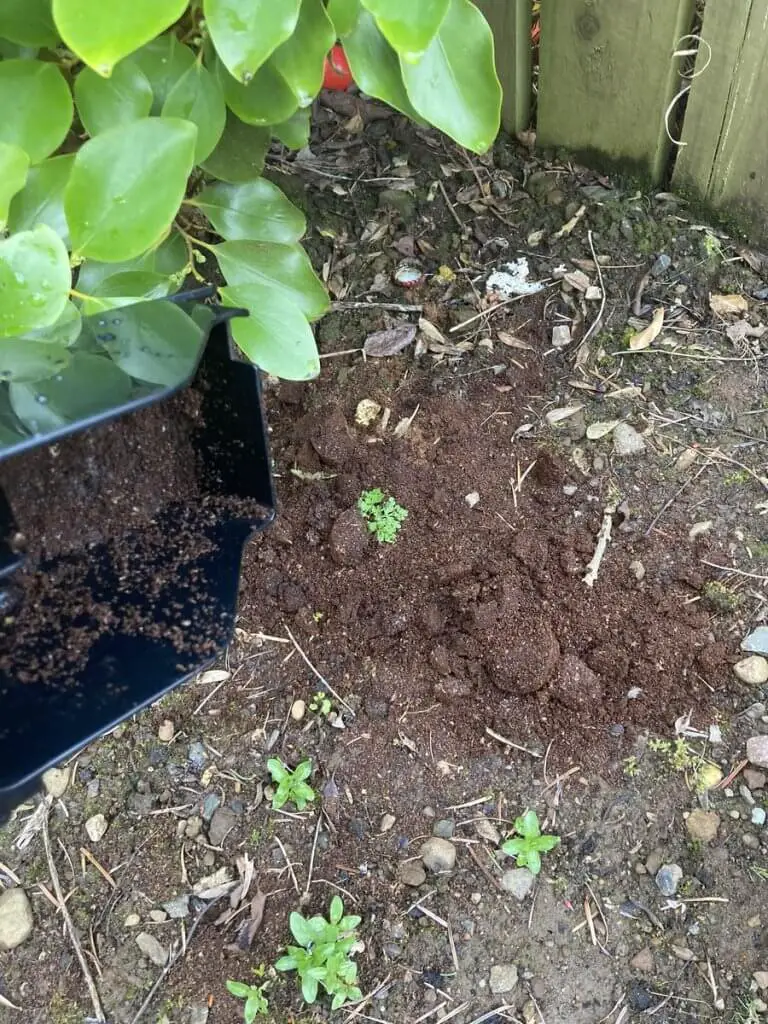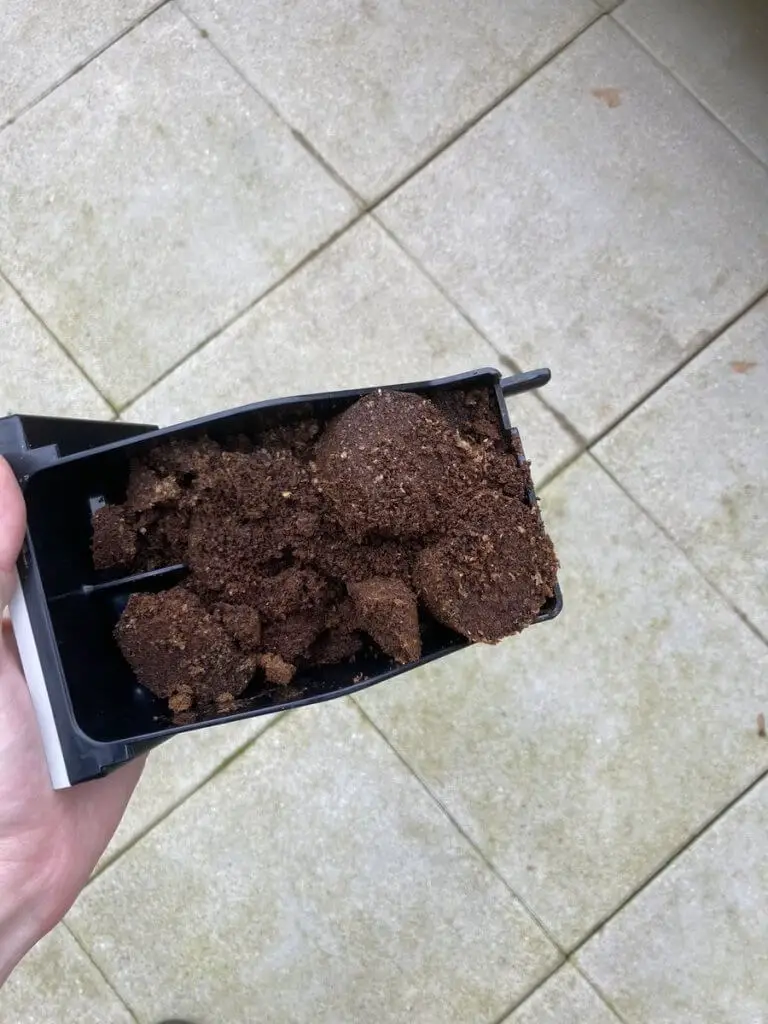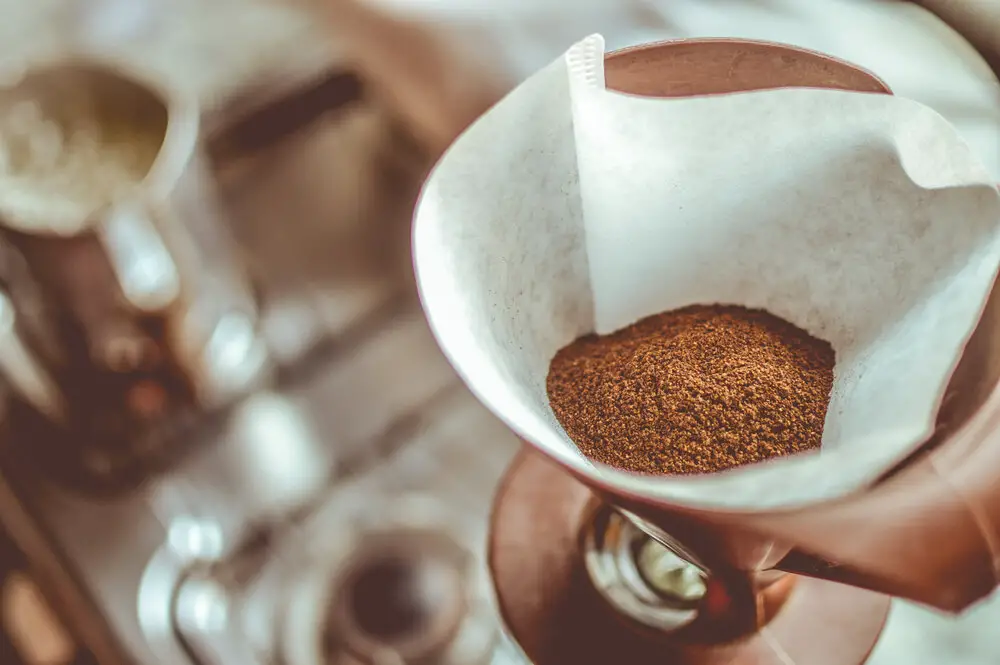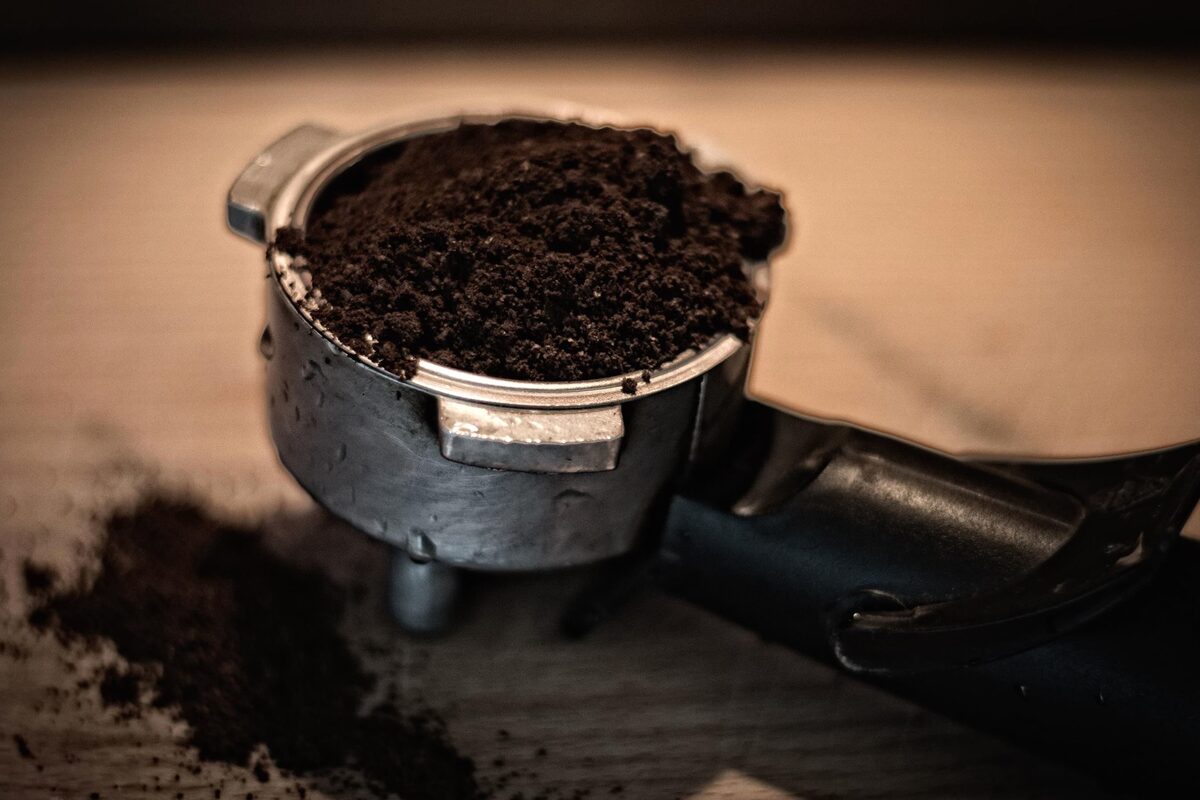You can compost coffee grounds. Adding coffee grounds to your compost or mixing them directly into the soil is a great idea. They have high nitrogen levels and other vital nutrients that boost plant growth. They also act as excellent pest repellants.
Coffee grounds are great additions to your compost pile as they aid in breaking down organic material into finished compost. They also balance the nitrogen-carbon materials, delivering healthy compost.
Coffee grounds also maintain ideal compost pile temperatures, thus accelerating the decomposition process. The heat kills dangerous pathogens and weed seeds present in the compost.
Coffee grounds are considered green material. Therefore, balance your compost mix by adding brown materials (carbon source) such as cardboard, dried leaves, veggie and food scraps, shredded cuttings, and egg shells.
Table of Contents
Is Coffee Ground Good for Plants?
Absolutely. Apart from being a perfect source of nitrogen, coffee grounds have many other benefits for your soil:
1. Add Essential Nutrients to the Soil
Coffee grounds contain 2% of nitrogen by volume. This essential nutrient is responsible for forming the building blocks of plant enzymes and proteins that aid nutrient digestion and absorption.
Nitrogen, a component of the chlorophyll molecule, also facilitates photosynthesis which aids in plant growth.
Coffee grounds contain crucial micronutrients such as potassium, phosphorous, phosphorus, magnesium, calcium, copper, and zinc.


2. Improve Soil Drainage
Coffee ground amendment improves soil structure. Coffee grounds are organic matter that decomposes into humus over time. The sponge-like product improves water retention capability and, most importantly, drainage.
As coffee grounds decay, they become a feasting medium for microorganisms such as earthworms. During the process, they scrawl through the soil, softening the typically heavy and dense structure, thereby improving drainage.
3. Improve Water Retention Capability
Soil amendment with coffee grounds improves soil’s water holding capacity. Additionally, a thicker and rightly packed soil facilitates healthier and thicker roots, capable of penetrating deep into the soil.
Coffee grounds are also ideal for plants that grow in moist soils. They help retain water after rain or irrigation longer. You also get to save energy and cut water bills.
4. Pest and Insect Repellant
Diterpenes and caffeine are highly destructive compounds to insects such as slugs and snails. Placing the coffee grounds around your garden in small heaps or mixing them with the top layer of your soil acts as a perfect pest and insect repellant.
Most of these pests and insects have a heightened sense of smell, making coffee grounds a perfect natural remedy to fight them off.
Any Reasons Why Not to Compost Coffee Grounds?
There are several instances when you should avoid composting coffee grounds. These include:
- If you have acidic soils, do not compost fresh coffee grounds or coffee beans into the soil. New coffee grounds are highly acidic. Instead, consider using them on acid-loving plants such as azaleas or blueberries.
- If your compost pile is too wet, heating up too quickly, or emitting an awful smell, it shows it has a too high ratio of nitrogen to carbon. Therefore, avoid adding coffee grounds to the compost.
- Remember that coffee grounds do not immediately release nitrogen directly into the soil. Instead, look for alternative nitrogen fertilizer.
- Avoid sprinkling coffee grounds on your seed beds. Caffeine is said to affect the germination process.
How to Compost Coffee Grounds: Four Easy Steps
Composting coffee grounds requires little work and effort. But before throwing them into the pile, there are several things you should keep in mind.
- Coffee grounds are considered green compost material (despite their brown color) because they are high in nitrogen. You must mix coffee grounds with brown compost materials such as dried leaves or grass clippings (rich in carbon).
- You must use the right proportion if you have large quantities of coffee grounds going into the pile. Too much nitrogen-rich material releases ammonium gases and kills beneficial microbes.
- The ratio of nitrogen to carbon should be 20:1 (we are talking about weight). In other words, your used grounds should go into a compost pile with lots of brown materials for the pile to be active and healthy.
Here are the steps:
- Throw your brown materials into the compost pile.
- Sprinkle the coffee grounds in a 20:1 ratio.
- Using a fork, mix the materials thoroughly.
- Repeat the process two or three times a week to facilitate aeration and heat distribution.
Note:
When adding more materials into the compost, remember to balance the brown and green ones in the mentioned ratio and mix thoroughly.
Other Ways to Compost Coffee Grounds
You can also compost your coffee grounds by adding them directly into the soil. The grounds will, over time, decompose into plant nutrients.
Vermicomposting is another way of decomposing your coffee grounds. Worms are fond of coffee bins; hence you can throw them into your worm bin for decomposition.

Coffee Grounds as Fertilizer
You do not have to wait for your coffee ground compost to mature for your garden soil to benefit.
You can use the coffee grounds as fertilizer in two ways; wet or dry.
1. Dry Method
Sprinkle coffee grounds on your soil and slightly rake as they make perfect slow-release fertilizer. Over time, soil microorganisms break down the decaying coffee grounds into plant nutrients.
Bonus:
Coffee grounds attract worms, microorganisms that are crucial to your garden’s ecosystem. Despite being abundant in the coffee grounds, plants cannot use nitrogen without the help of worms and other microorganisms.
2. Wet Method
The wet method makes a perfect liquid fertilizer. Here is the step-by-step guide on how to make one.
- Add two cups of used coffee grounds in 21/2 liters of water.
- Stir thoroughly and let it sit for several hours or overnight.
- Drain and apply the liquid to the roots of your plants or spay on the leaves.
When using coffee grounds fertilizer, make a note of:
- Fresh coffee grounds are highly acidic and should only be added to acid-loving plants.
- An extra boost of coffee grounds into an already concentrated nitrogen soil can cause stunt growth.
- Do not add too many coffee grounds or pile them too closely as mulch. The small particles lock together and can create an air or water-resistant barrier.
- Coffee ground fertilizer should not be your only source of nutrients, especially during planting, as it does not release nutrients immediately.
Adding Other Coffee Items to Your Compost Bin
Apart from coffee grounds, you can also compost:
1. Compostable Coffee Pods
Compostable coffee pods are made from plant-based materials that break down as quickly as other organic materials in your pile.
2. Unbleached Paper Coffee Filters
Unbleached coffee filters are considered carbon-rich materials and ideal for balancing the nitrogen-carbon in your compost.
However, coffee filters take longer to decompose, unlike other organic materials. So shred them into tiny pieces before mixing them into your bin.

